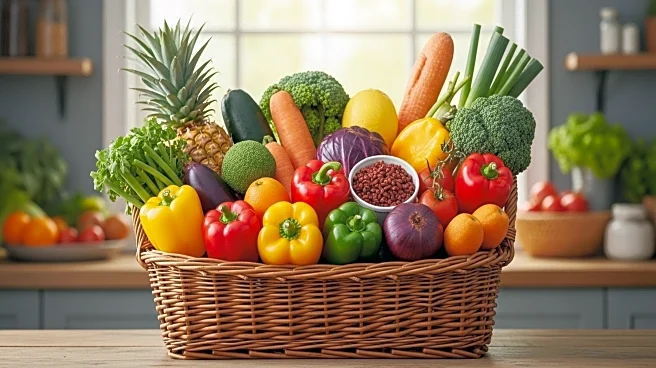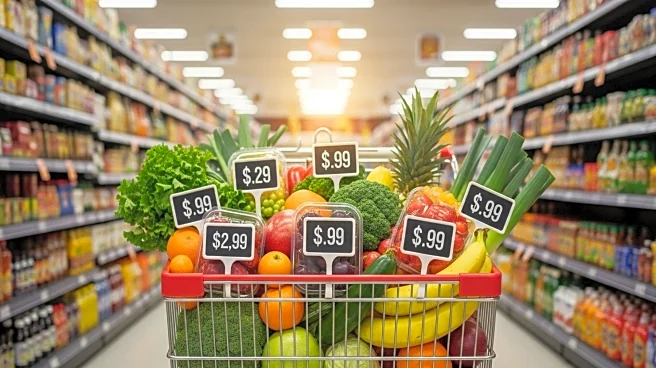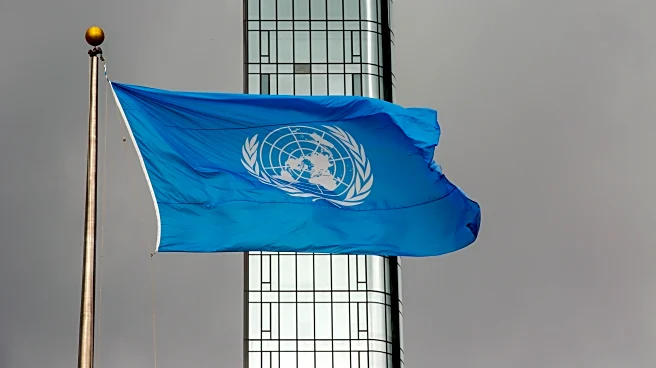What's Happening?
Grocery prices in the U.S. have risen by 0.6% from July to August, marking the fastest monthly rate change since October 2022. This increase is attributed to inflation and tariffs, with food prices now 29% higher than pre-pandemic levels. Factors contributing to the rise include supply-chain disruptions from COVID-19, Russia's invasion of Ukraine, and the bird flu's impact on the U.S. egg supply. Additionally, climate change and drought conditions have affected beef and coffee prices. The U.S. Bureau of Labor Statistics reports a 2.7% increase in beef prices from July to August, driven by reduced cattle supply and high demand. Tariffs on imported goods, such as coffee from Brazil, have further exacerbated grocery costs. A poll by The Associated Press-NORC Center for Public Affairs Research reveals that 53% of U.S. adults consider grocery costs a major source of stress.
Why It's Important?
The rising grocery prices are a significant concern for U.S. consumers, particularly as they impact essential food items. The stress on household budgets may lead to changes in consumer behavior, such as increased reliance on private label brands and store brands to save money. The economic strain could also affect broader market dynamics, with potential implications for retail and agricultural sectors. As tariffs and supply chain issues persist, the cost of living may continue to rise, prompting calls for policy interventions to stabilize prices and support affected consumers. The situation underscores the interconnectedness of global events and domestic economic conditions, highlighting the need for strategic responses to mitigate inflationary pressures.
What's Next?
The continued rise in grocery prices may lead to further economic stress for U.S. households, particularly as tariffs and supply chain disruptions persist. Policymakers may face pressure to address these issues through trade negotiations and domestic agricultural support. Consumers may increasingly seek cost-saving measures, such as switching to store brands or seeking discounts. The agricultural sector may need to adapt to changing demand patterns and explore sustainable practices to mitigate climate-related impacts. As the holiday season approaches, retailers may need to strategize to maintain consumer engagement despite rising costs.
Beyond the Headlines
The grocery price surge highlights broader economic challenges, including the impact of geopolitical tensions and climate change on food supply chains. The situation raises ethical questions about food security and the equitable distribution of resources. Long-term solutions may involve investment in sustainable agriculture and international cooperation to stabilize commodity markets. The stress on consumers may also influence cultural shifts, with increased focus on frugality and resourcefulness in household spending.












